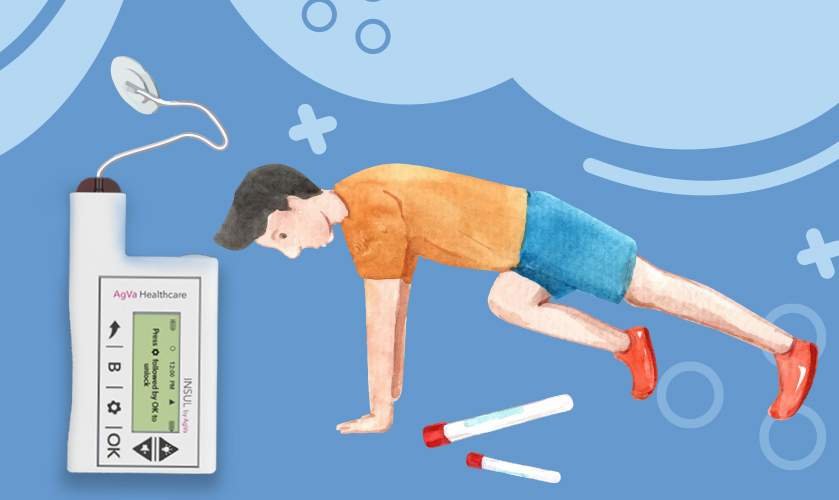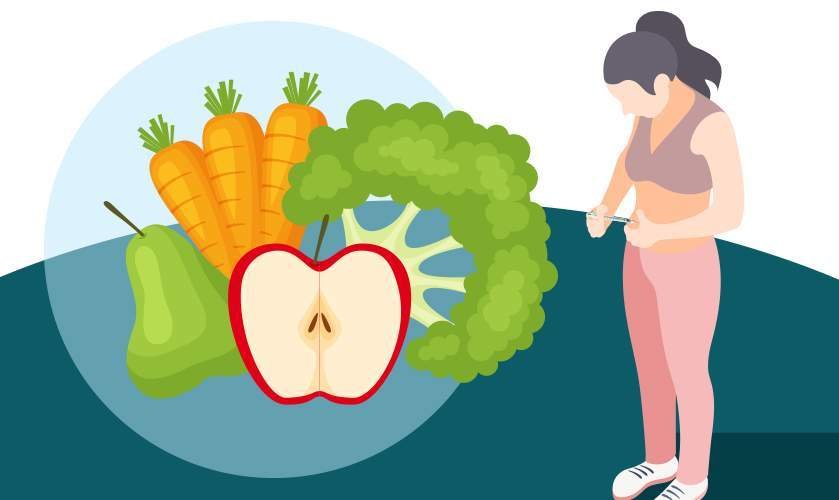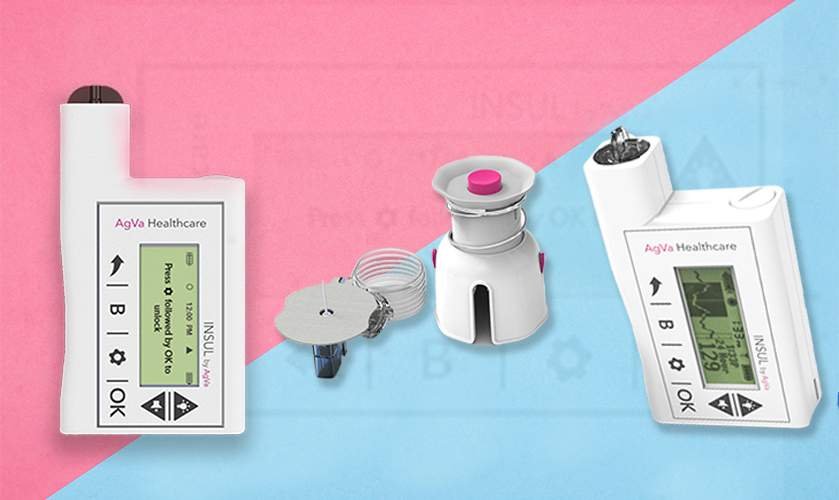Insulin Pump Therapy
An insulin pump is a device that helps in the continuous management of blood sugar levels. This small device delivers a supply of rapid-acting insulin for 24 hours to match the body’s natural insulin levels.
The pump delivers insulin in two different ways:
1. Background (basal) Insulin

It delivers the normal requirement of insulin throughout the day. It always works in the background and stabilises the blood sugar between meals, during sleep and during fasting.
People with type 1 diabetes don’t produce insulin and they need an external supply of bolus insulin to manage their blood sugar levels. While in type 2 diabetes the body is still making insulin, however, the quantity produced may be insufficient and/or the cells are unable to utilize it. This is why, in a significant number of patients with type 2 diabetes, an insulin pump is recommended.
Basal insulin works slowly and lasts longer, which allows the body to counter extra glucose released by the liver and stabilisation of blood glucose.
2. Mealtime (bolus) Insulin:

This is an extra amount of insulin that is given to match the food eaten or to correct high blood sugar levels. This is given when fasting glucose goals are going well but the postprandial goals are not. Postprandial refers to the time after eating. Hence, bolus insulin is delivered when blood glucose levels are above preset targets and additional short-acting insulin is added to the bolus dose before eating.
Bolus insulin helps in keeping the blood sugar levels under control after taking meals and preventing hyperglycemia.
How does an insulin pump work?

Insulin pumps deliver insulin to the body through a set of its components called insulin reservoir, infusion set, and cannula. A thin, flexible tube called an infusion set delivers insulin to the body. The cannula is inserted under the skin layer. The cannula can be inserted on any part of the body such as the stomach, thighs and buttocks. The basal or bolus dose is set on the device and the cannula transfers every dose to the body. The part on which the cannula is inserted is covered with a flesh-coloured bandage, so it doesn’t move. A display screen on the insulin pump shows the status of current blood glucose levels and insulin delivery.
Benefits of insulin pump therapy
An insulin pump can bring many positive changes in the lifestyle such as:
Conventional insulin intake involves multiple shots of insulin, which is replaced by the insulin pump wherein the insulin is continuously delivered through a small needle placed under the skin for a period of a few days to a few weeks. The infusion set (and needle) need to be replaced only after the period specified by the manufacturer of the pump
Insulin pump such as Insul by AgVa can hold up to 500 units of insulin, which is enough to continuously deliver insulin without changing the cartridge for up to 2 weeks.
Insulin pumps can be customised to deliver different basal insulin doses throughout the day. Also, people can change their mealtime insulin to match with the food they have eaten.
The bolus calculator has replaced the complex maths calculations previously needed to calculate the dose.
Insulin pumps help in achieving better control of blood glucose.